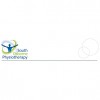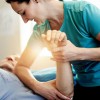
Heather Plett graduated in 2008 from the University of Manitoba with a Bachelor of Medical Rehabilitation in Physical Therapy. She started her career in the hospital working with cardiac, geriatric and post-operative patients. Heather transitioned to orthopaedics and hand therapy in 2010 and discovered a real passion for hands-on therapy.
Heather joined the Donna Sarna Physiotherpay team in 2011. Heather has taken extensive post graduate training in pelvic floor therapy, has achieved her myofascial release level 3, visceral manipulation level 4 and craniosacral therapy. Believing in the importance of teaching people how to maintain their health, tune into their bodies.
Heather joined the Donna Sarna Physiotherpay team in 2011. Heather has taken extensive post graduate training in pelvic floor therapy, has achieved her myofascial release level 3, visceral manipulation level 4 and craniosacral therapy. Believing in the importance of teaching people how to maintain their health, tune into their bodies.
Services
Female urinary incontinence refers to the involuntary loss of urine, whether it be a small drop or complete emptying of the bladder. It is often experienced during pregnancy and after childbirth as well as later in life with menopause, but it should NOT be considered normal.
Statistics show that between 10-30% of women between the ages of 20-55 have experienced urinary incontinence and 1 in 5 women over the age of 45 suffer from urinary incontinence, but only 1 in 12 are known to health care workers.Women are frequently advised to do Kegels or pelvic floor strengthening exercises when these symptoms occur.
Statistics show that between 10-30% of women between the ages of 20-55 have experienced urinary incontinence and 1 in 5 women over the age of 45 suffer from urinary incontinence, but only 1 in 12 are known to health care workers.Women are frequently advised to do Kegels or pelvic floor strengthening exercises when these symptoms occur.
Pudendal neuralgia, also known as Alcock's syndrome or pudendal canal syndrome, refers to pain originating from irritation of the pudendal nerve. The pudendal nerve originates in the pelvis and provides sensory and motor innervation to the muscles and tissue of the pelvic floor. It has 3 branches that innervate, the front, middle and back of the pelvic floor.
During pregnancy your body experiences dramatic physiological changes. These are natural changes, but they may have a significant impact on the pelvic floor muscles and ligaments as they become softer, allowing your baby to grow and your body to change. Your center of gravity will change as the hollow in your back increases, breasts enlarge, and your overall weight increases.
Diastasis recti is a separation of the rectus abdominus (6-pack) muscle at the midline. Separation occurs as a result of the widening and thinning of the fascia, known as the linea alba. During pregnancy, diastasis recti occurs in response to the force of the uterus pushing against the abdominal wall as the baby grows as well as with the release of hormones softening the connective tissue to prepare for the birthing process.
It is not uncommon for breastfeeding moms to experience a blocked or plugged milk duct. Ducts become blocked when milk fails to drain completely or if the duct becomes compressed or damaged. This can happen after an illness such as a cold, during a particularly busy or stressful time such as the holidays, or simply out of the blue.
Reviews (8)
Tammy Dyck
Sep 07, 2020
Report
Jen StLaurent
Jul 03, 2020
Report
Erin Reimer
Jan 23, 2020
Report
Jina Patel
Jan 19, 2020
Report
Patrick
Jun 05, 2019
Report
Monica Chochinov
Aug 08, 2018
Report
If you have any pelvic floor issues don't hesitate see Donna. I had a prolapsed uterus after baby number 3. Doctors said I was fine. I heard about Donna through my midwife and made an appointment. She diagnosed me with a second degree prolapse. Through several months of physio and regular maintenance exercises I am good as new. Donna is amazing!
Leslie Carignan
Nov 09, 2016
Report
Tim Kowaliszyn
Jul 31, 2014
Report





